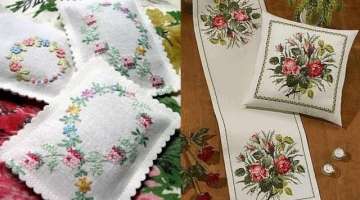Meet Purple Gallinule, An Insanely Beautiful Waterbird With Bright Purple-Blue Plumage (video)
The purple gallinule is an extraordinary bird. Their stunning plumage of bright bluish-purple with a turquoise sheen can always bring these water birds into the spotlight. This wader is one of the most beautiful and colorful birds that you could spot in real life. They stand out from the crowd.
- 1 | 8

This gallinule is a striking bird, big, brightly colored, and noisy. With its strong legs and long toes, it runs about on open shorelines, walks on floating lily pads, and clambers through marshes and waterside trees, flicking its short tail nervously. Nods its head as it swims; flies short distances with legs dangling conspicuously. Found mainly in the southeast and the tropics, but single birds sometimes stray far to the north at any season.
- 2 | 8

This beautiful bird grabs your attention with it's purple head and neck, green back and light blue forehead. The juvenile is pale brown with a greenish back and the chicks are black. They spend the summer along the southeast US coast and are residents in Florida, Central and South America. They prefer freshwater marshes with extensive floating vegetation and brushy edges.
- 3 | 8

Purple Gallinules may appear awkward when they fly short distances with their bright yellow legs dangling beneath them, but individuals are routinely spotted far outside their range as they stray to the north, even as far as Canada. While they are still listed as a species of Least Concern by the IUCN, their population has decreased with the loss of necessary wetland habitat.
- 4 | 8

Feeding Behavior and Diet: Forages while walking on land, while climbing through marsh vegetation or waterside shrubs or trees, or while swimming. Omnivorous. Eats a wide variety of plant and animal matter, including seeds, fruits, and leaves of aquatic and terrestrial plants, also insects, frogs, snails, spiders, worms, fish. At times, eats the eggs and young of other birds.
- 5 | 8

Eggs: 6-8, sometimes 5-10. Buff with brown spots. Incubation is by both sexes, 22-25 days. Young: May leave nest shortly after hatching, move to 2nd nest. In feeding young, parents are often assisted by other birds (as many as 8); these "helpers" evidently all are previous offspring of breeding pair, and juveniles less than 10 weeks old may help feed newly hatched chicks. Young are capable of flight at roughly 9 weeks.
- 6 | 8

Nesting: Breeding behavior has been studied mostly in Costa Rica. May breed at any season in tropics, only in spring and summer in North America. Nest site is in dense marsh growth, over water that is often several feet deep. Nest (built by both sexes) is platform of cattails, grasses, sedges, firmly anchored to standing marsh vegetation, at water level or 1-3' above it. Often build extra nests.
- 7 | 8

Young: May leave nest shortly after hatching, move to 2nd nest. In feeding young, parents are often assisted by other birds (as many as 8); these "helpers" evidently all are previous offspring of breeding pair, and juveniles less than 10 weeks old may help feed newly hatched chicks. Young are capable of flight at roughly 9 weeks. Habitat: Fresh swamps, marshes, ponds. In North America usually in extensive wetlands with still or slow-moving shallow water, lots of dense marsh cover and floating vegetation. In tropics may be found also on smaller ponds, ditches. During migration, individuals may stop over in odd habitats, even in cities.
- 8 | 8

Conservation status: Still widespread in appropriate habitat, but undoubtedly has decreased with draining of swamps, and still vulnerable to loss of more wetlands. Watch the video of the purple gallinule below.


















